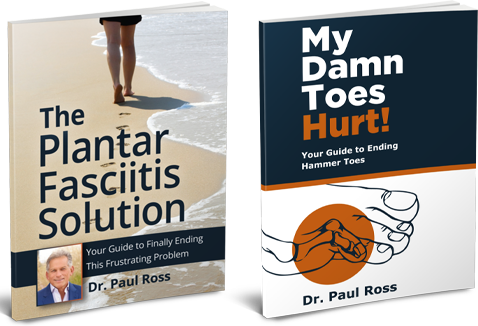 Our Springfield VA podiatrist suggests the number one sign of heel spurs is consistent, sharp pain in the heels, especially when first standing up in the morning or after sitting down for an extended period. Those with heel spurs attest to the pain becoming duller as the day goes on, but our 5-star Springfield podiatrist is here to help minimize that discomfort as much as possible.
Our Springfield VA podiatrist suggests the number one sign of heel spurs is consistent, sharp pain in the heels, especially when first standing up in the morning or after sitting down for an extended period. Those with heel spurs attest to the pain becoming duller as the day goes on, but our 5-star Springfield podiatrist is here to help minimize that discomfort as much as possible.
What Is A Heel Spur? Our Springfield VA Podiatrist Answers
A heel spur is defined as a calcium deposit on the underside of the heel, as though the heel is resting on a small pebble. Heel spurs can be confirmed by X-rays, but if the pain is congruent with the pattern of heel spurs, our Springfield podiatrist can diagnose “heel spur syndrome” even without a definitive X-ray.
Heel spurs are often associated with plantar fascia, as strains on the foot muscles, ligaments, and tendons are often root causes. The wearing down of the membrane that covers the heel bone may also be a cause, especially among athletes who often do sustained amounts of running and jumping particularly on hard surfaces.
Along with being an athlete, other risk factors for heel spurs include wearing poorly fitted shoes or those without proper arch support, walking with a gait that places excess stress on ligaments, nerves, or a heel bone, and being overweight.
Over 90 percent of people can cope with heel spurs without surgery. Conservative treatments include stretching, taping the stressed muscles and tendons, physical therapy, or choosing to wear orthotic devices, inserts, and recommended shoes. Over-the-counter medication may provide appropriate pain relief as well.
Some podiatrists may also recommend exercise, but results vary from case to case. Often exercise allows for the pain to dull as the plantar fascia slowly elongates; however, after resting and standing back up, that elongation will have contracted again, and sudden pressure may result in pain.
Advice To Prevent Heels Spurs From Our Springfield VA Podiatrist
Well-fitted, shock-absorbent shoes are an effective prevention method to keep heel spurs from occurring. Supportive heel counters in shoes for activities is helpful as well. Apart from just the shoe, be sure to warm up and stretch the foot before engaging in demanding physical activities. Abrupt shock and stress can cause heel spurs to form. Additionally, losing weight to minimize the daily pressure on heels can be helpful as well.
If you have experienced heel pain for over a month, give our Springfield VA podiatry office a call to set up a consultation with our expert podiatrist.
The information provided in this article is not meant to be medical advice and is for educational purposes only. If you would like to learn more about this and other topics related to podiatry, feel free to contact The Podiatry Center, with a convenient podiatry office location near Springfield VA, by clicking here or by calling 301.656.6055.

